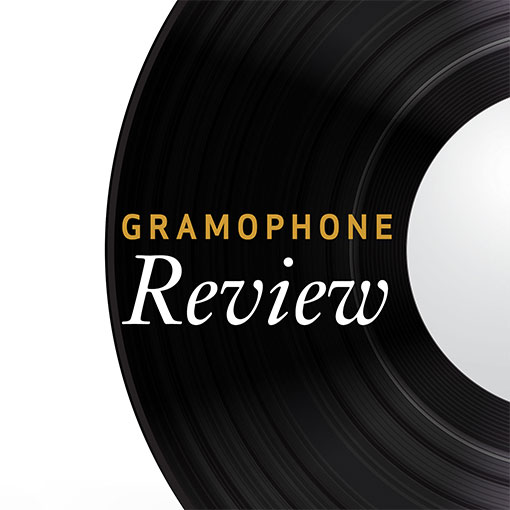Rubbra Orchestral Works
View record and artist detailsRecord and Artist Details
Composer or Director: (Charles) Edmund Rubbra
Label: Chandos
Magazine Review Date: 10/1997
Media Format: CD or Download
Media Runtime: 71
Mastering:
DDD
Catalogue Number: CHAN9538

Tracks:
| Composition | Artist Credit |
|---|---|
| Symphony No. 1 |
(Charles) Edmund Rubbra, Composer
(Charles) Edmund Rubbra, Composer BBC National Orchestra of Wales Richard Hickox, Conductor |
| Sinfonia Concertante |
(Charles) Edmund Rubbra, Composer
(Charles) Edmund Rubbra, Composer BBC National Orchestra of Wales Howard Shelley, Piano Richard Hickox, Conductor |
| (A) Tribute (for Ralph Vaughan Williams on his 70t |
(Charles) Edmund Rubbra, Composer
(Charles) Edmund Rubbra, Composer BBC National Orchestra of Wales Richard Hickox, Conductor |
Author: Robert Layton
An important issue. With it Richard Hickox turns to the Rubbra of the 1930s. The First Symphony dates from 1935-7 and the Sinfonia concertante precedes it, though the form in which we know it dates from the early-1940s. In The Music of Edmund Rubbra (Scolar Press: 1993) Ralph Scott Grover tells of the great impression the First Symphony made at its first performance under Sir Adrian Boult in 1937. Parallels were drawn with Vaughan Williams’s Fourth and Walton’s B flat minor Symphony, for like them this is powerful and at times angry music. Robert Simpson described it as a “severe, even stringent piece ... [whose] dogged power is not meant to endear itself to the listener”. Harold Truscott wrote of it demanding “enormous concentration of the listener” and spoke of its orchestration as “persistently thick and without relief”. In fact, he went so far as to say “it’s not primarily an orchestral sound at all and you have to forget colour and concentrate on line development”. I certainly think you could say that evolution rather than development in the conventional sense lies at the heart of its musical processes – as is the case in its immediate successor. It is a tribute to the orchestral balance that Richard Hickox has achieved and the expertise of the Chandos team that the texture sounds as lucid as it does. The tempestuous first movement comes off very well, so does the charming second movement, Perigourdine, a French dance whose eight-bar tune runs through the whole movement like a sort of moto perpetuo. However, it is the powerful slow finale, which is longer than the other two put together, that leaves the strongest and most enduring impression.
The Sinfonia concertante is hardly less substantial or indeed symphonic. Its beautiful and reflective opening almost foreshadows the later Piano Concerto in G major but, as with the Symphony, it is the last movement which resonates longest in the memory. This is a prelude and fugue dedicated to the memory of his teacher Gustav Holst who had died in 1934. It is a searching, thoughtful movement and I would echo Ronald Stevenson’s sentiments. “Such a humbly proud, individual and profoundly-felt work somehow won’t permit me to bemoan it with the customary epithet ‘neglected’: it is the audiences who are being neglected when such a work isn’t performed.” And how eloquently and sensitively it is performed here by Howard Shelley, Richard Hickox and the BBC National Orchestra of Wales. Both the Symphony and the Sinfonia concertante have taken 60 years to reach the catalogue, and the fact that they are long overdue does not diminish the warmth of their welcome. Congratulations are in order all round, to the artists and the Chandos team.'
The Sinfonia concertante is hardly less substantial or indeed symphonic. Its beautiful and reflective opening almost foreshadows the later Piano Concerto in G major but, as with the Symphony, it is the last movement which resonates longest in the memory. This is a prelude and fugue dedicated to the memory of his teacher Gustav Holst who had died in 1934. It is a searching, thoughtful movement and I would echo Ronald Stevenson’s sentiments. “Such a humbly proud, individual and profoundly-felt work somehow won’t permit me to bemoan it with the customary epithet ‘neglected’: it is the audiences who are being neglected when such a work isn’t performed.” And how eloquently and sensitively it is performed here by Howard Shelley, Richard Hickox and the BBC National Orchestra of Wales. Both the Symphony and the Sinfonia concertante have taken 60 years to reach the catalogue, and the fact that they are long overdue does not diminish the warmth of their welcome. Congratulations are in order all round, to the artists and the Chandos team.'
Discover the world's largest classical music catalogue with Presto Music.

Gramophone Digital Club
- Digital Edition
- Digital Archive
- Reviews Database
- Full website access
From £8.75 / month
Subscribe
Gramophone Full Club
- Print Edition
- Digital Edition
- Digital Archive
- Reviews Database
- Full website access
From £11.00 / month
Subscribe
If you are a library, university or other organisation that would be interested in an institutional subscription to Gramophone please click here for further information.





